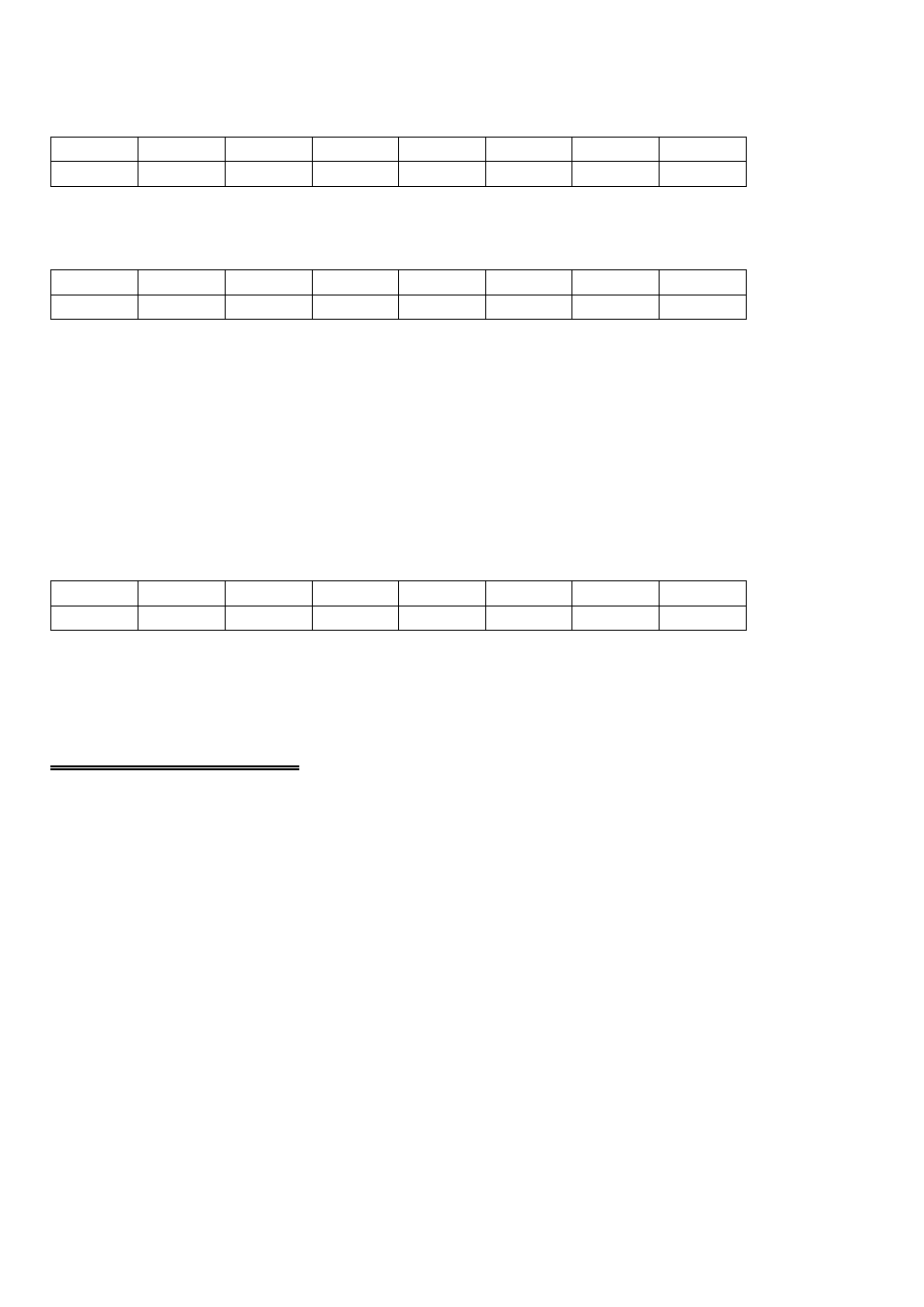10 analog inputs – Measurement Computing PC104-DAS16JR/12 User Manual
Page 23

8254 COUNTER 1 DATA
BASE ADDRESS + 13
30Dh, 781 decimal
D1
D2
D3
D4
D5
D6
D7
D8
0
1
2
3
4
5
6
7
8254 COUNTER 2 DATA
BASE ADDRESS + 14
30Eh, 782 decimal
D1
D2
D3
D4
D5
D6
D7
D8
0
1
2
3
4
5
6
7
Because each counter will count as high as 65,535, loading or reading the counter data
is a multi-step process. Refer to the 82C54 data sheet for details regarding its
programming. The data sheet is available at:
http://www.measurementcomputing.com/PDFmanuals/82C54.pdf
8254 COUNTER CONTROL
BASE ADDRESS + 15
30Fh, 783 decimal
D1
D2
D3
D4
D5
D6
D7
D8
0
1
2
3
4
5
6
7
This register controls the operation and loading/reading of the counters. Refer to the
82C54 data sheet for programming details.
3.10 ANALOG INPUTS
Analog signals connected to the analog inputs are first fed into the two HI-0508
analog multiplexers (MUXs). A MUX's function is to select one of the inputs and
connect that input to the MUX output. One of these MUX chips connects CH0-CH7
high inputs. The other connects CH0-CH7 Low input (differential input mode) or
CH8-CH15 High inputs (single ended mode) depending on the state of the channel
configuration switch marked 8/16.
From the output of the MUX, the analog signal is fed into a programmable differential
amplifier.
The A/D converter chip has an integral sample & hold circuit, greatly simplifying
design and improving signal integrity. The A/D converter is capable of sampling rates
to 330 kHz but the DMA transfer circuitry of the personal computer's 8-bit bus is
limited to a maximum synchronous transfer rate of less than the maximum A/D rate.
19
